Complete guide to sash windows: Styles, costs, pros and cons
Sash windows have a charm all of their own — elegant, stylish and characterful. However, understanding how to restore or replace them is not always straightforward. Our guide explains everything you need to know
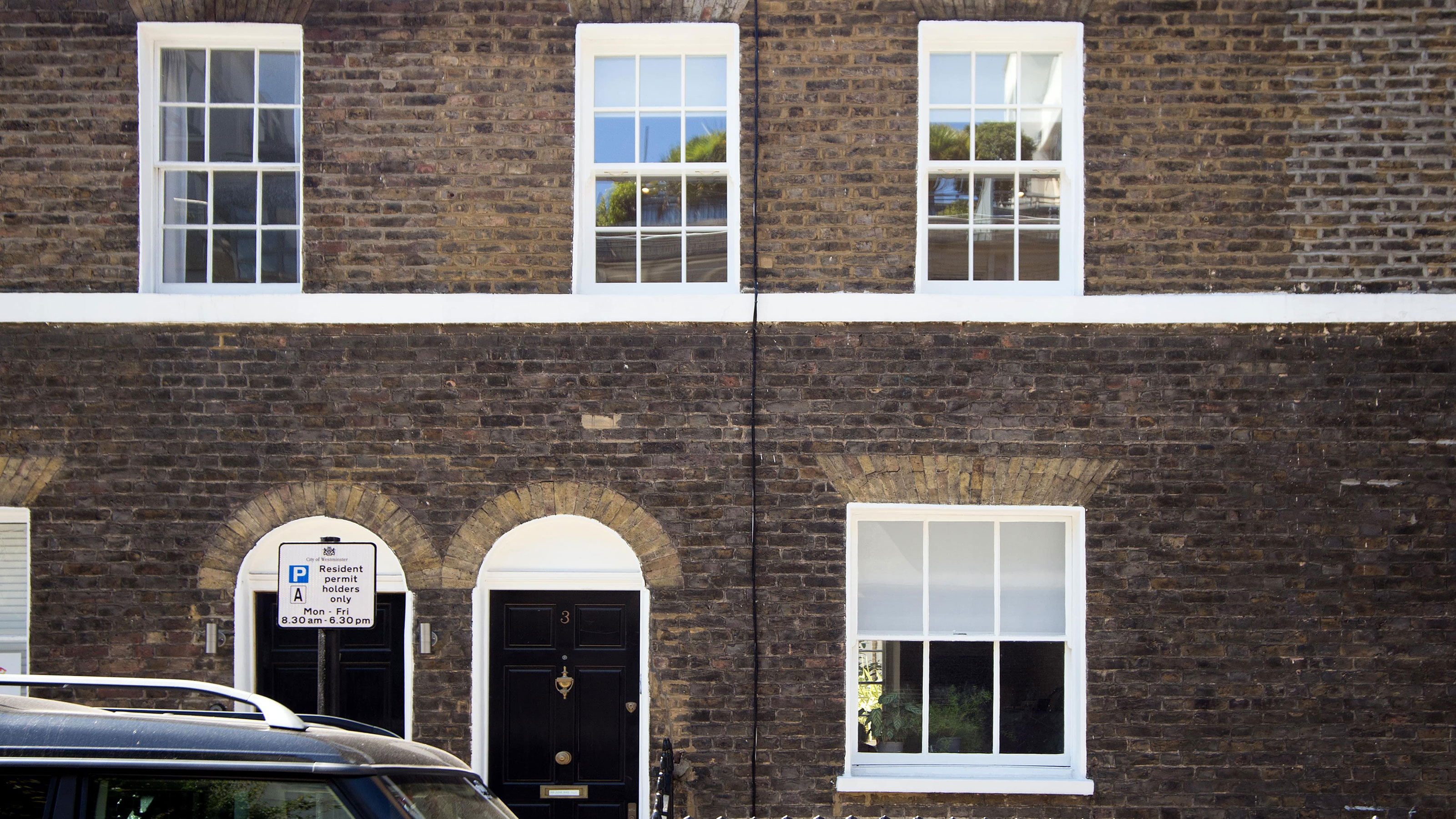
Not only are sash windows a much sought-after original feature by those buying a period property, they're also highly popular with self builders wanting to build a Georgian, Victorian or even New England style home.
The way in which sash windows operate is quite different from other window styles, such as casement windows so whether you have inherited sash windows that are in need of some repair work, want to upgrade the glazing or thermal properties of your windows, are looking to replace existing openings with new sash windows or are starting from scratch, it is important to understand how they work, their advantages and disadvantages and what kind of costs you might be facing too.
Original sash windows are usually single glazed, draughty and often have a timber frame in need of repair. New sash windows, on the other hand, are double-glazed (at least), thermally efficient and may even be made of alternative, more durable materials than timber.
In our complete guide, we look at everything you need to know about sash windows.
What are sash windows?
Homeowners most often facing the task of repairing sash windows will be living in Georgian and Victorian properties, as well as sometimes in certain styles of late Victorian and Edwardian houses.
The word ‘sash’ refers to a single frame for glazing. The sash sits inside the frame, which is fixed to the house. In a casement window the sash opens via a crank handle, while a traditional double-hung sash window features two sashes, split into a number of smaller panes, that slide up and down, or, occasionally, side to side in the case of horizontally sliding sash windows.
Horizontally sliding sash windows are also sometimes known as 'Yorkshire sash windows' or ‘slider’ windows. This design actually pre-dates the vertical sash and although they use the same sliding mechanism, one of the sashes is usually fixed in place.
"This window style is still widely used on traditional-style self builds," says self build expert Mark Brinkley. "Sizes are typically non standard but windows need to be in proportion to the house, so are often bespoke."
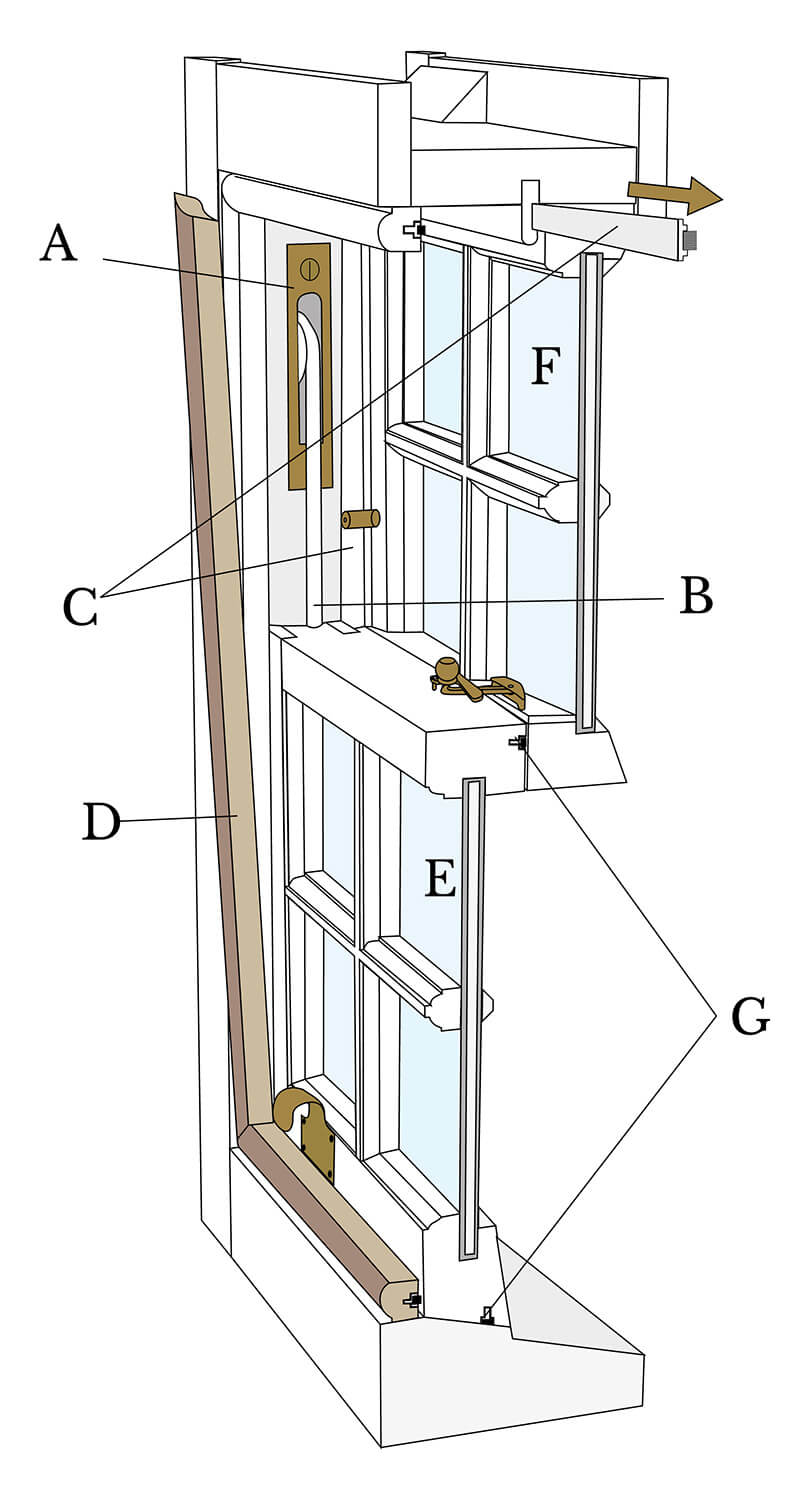
The above diagram, from timber window and door renovation specialists Ventrolla, shows exactly how a sash window works.
A – pulley. The sash cord serves as a mechanism that facilitates the smooth opening and closing of your sashes by allowing them to be counterbalanced against each other.
B – sash cord. Each sash is connected to a sash cord that is attached to the side of the sash and fed through a pulley. The sash cord is then attached to a lead sash weight inside the sash box, which is not visible until the window is disassembled, and the sash box is opened. The weights are affixed to the sash cord and work together to counterbalance the weight of each sash during the opening and closing process.
C – Parting bead. There are two parting beads positioned on both sides of the sash box, running vertically from top to bottom between the sashes. Each half section of a Ventrolla parting bead contains a draught-proofing system that faces the adjacent sash, forming a snug weather seal.
D – Staff bead. The internal trim that frames your sash box and keeps the sashes in position is known as a staff bead. The Ventrolla staff bead is affixed to a detachable popper system and is equipped with additional draught-proofing pile.
E – Bottom sash. This refers to the lower moving sash located within your sash box. Each sash is comprised of a top rail and a bottom rail. In the case of this sash, there is also a mid-rail where the two sashes meet.
F – Top sash. This refers to the upper moving sash located within your sash box.
G – Ventrolla Perimeter Sealing System (VPSS). The Ventrolla Perimeter Sealing System (VPSS) comprises various draught-proofing elements that work together to seal the entire perimeter of the sash window. These include the sealing system installed above the top sash, either within the sash itself or in some parting bead facing the top sash; the bottom rail of the top sash, which seals the gap between the two sashes; the bottom rail of the bottom sash, which features a weather-resistant version of our draught proofing to withstand the elements; the staff bead, which faces the sashes internally and keeps them in place; and the parting bead, which spans from top to bottom on each side of the sash box, with each half section facing the relevant sash it sits next to, creating a tight weather seal. The combination of all these elements provides comprehensive draught proofing for the entire sash window perimeter.
How does a sash window work?
The majority of traditional sash windows use an operating system that balances the sash with a steel, cast-iron or lead counterweight. This weight is hung on a cord that's located in a box within the frame of the window.
In modern sash windows, you're more likely to find a spring balance (or sash balance) system. This is a spring-loaded device which counters the force of gravity, in effect holding your sash window open without the need for cords, pulleys and those metal counterweights.
Pros and cons of sash windows
Just as with all styles of windows, there are both advantages and disadvantages of living in a house with sash windows.
In the case of old windows, one of the main issues faced by homeowners is how to draught proof sash windows in order to make them more comfortable to live with.
In order to decide whether sash windows are right for you, take a look at their pros and cons.
Pros of sash windows:
- Beautiful in appearance, offering classic, heritage good looks.
- Great in hot weather. Because sliding sash windows open at the top and bottom, they create great convection, cooling and ventilating a room more efficiently in hot weather.
- Windows can generally be locked ajar, meaning you can have an open window without as many security concerns.
- Can add value to a house. This is a style of window often very much in demand.
Cons of sash windows
- Expensive: This style of window tends to be more costly than others, such as casements.
- Complicated systems: This can make them harder to maintain.
- Time consuming to paint: Painting windows is more complex with sash windows
- Cannot open fully, unlike double casement windows as there's always the size of one sash over the window.
Are sash windows worth it?
In a period-style new build, sash windows offer an appearance and quality that's hard to beat. Though the cost will be higher than a standard window, either PVCu or timber, modern sash windows will last for many many years with the right maintenance, making them a good investment for your home.
Many properties built during the 17th to 19th centuries would just look wrong without sash windows. If you’re renovating a Georgian, Regency or Victorian property, or building a new home inspired by these periods, installing or renovating sash windows should be your top choice when it comes to windows styles. In a Conservation Area, or when renovating a listed building, you may not have a choice but to opt for sash windows.
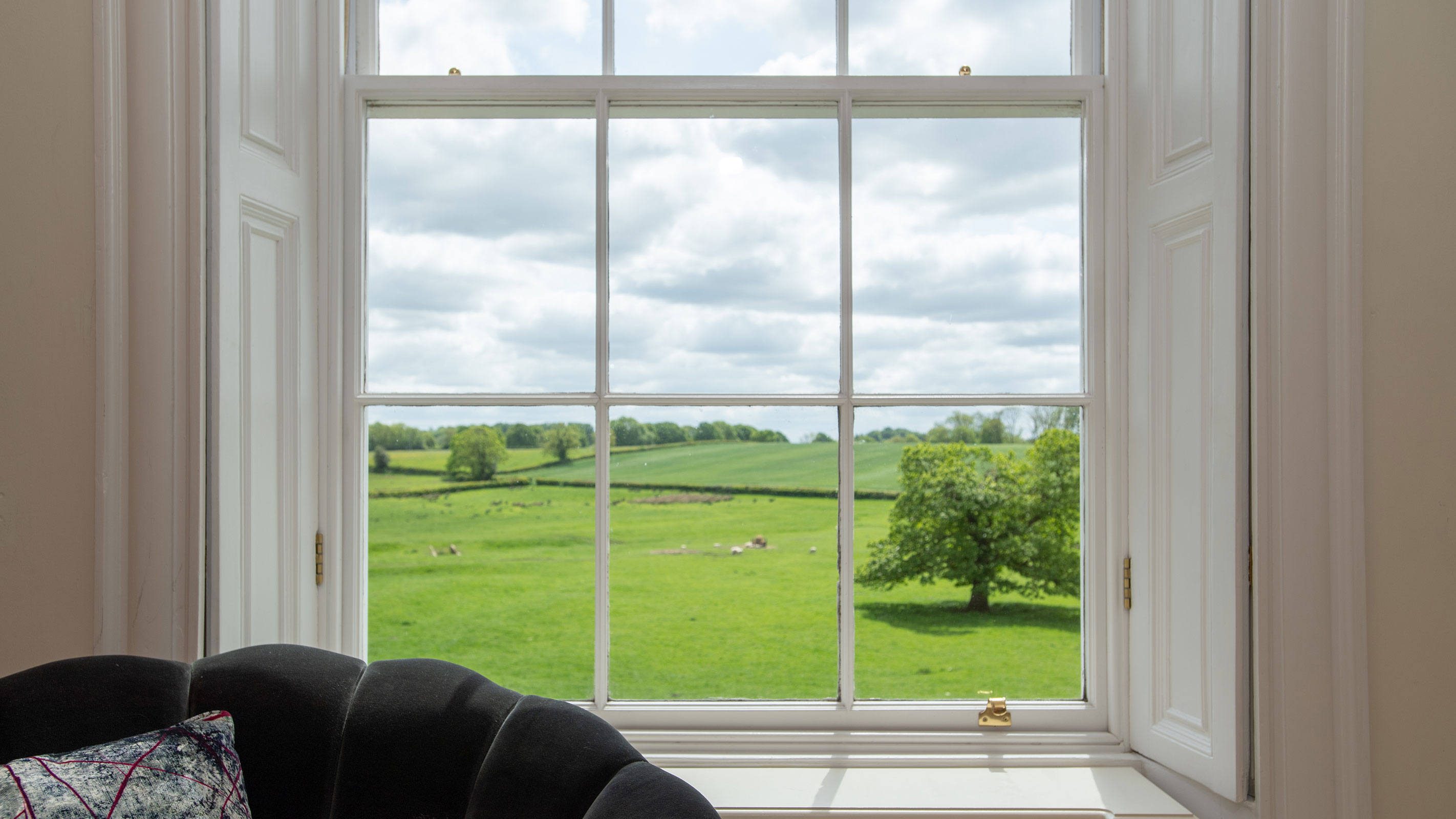
What different types of sash windows are there?
There is not just one type of sash window and when fitting replacement sash windows into a period property, or choosing new sash windows for a period-style self build, it is crucial to get the style right as there were several developments and style changes over the years.
Sash windows traditionally consist of a number of small panes, or ‘lights’. These are held together by glazing bars – astragal bars – to create a larger glazed area. This is because glass technology at the time didn’t allow for very large expanses of clear glazing.
The period of the house will dictate the number of panes in each sash separated by astragal bars:
- Georgian: The ‘six over six’ style is the quintessential choice for building a Georgian style house, although larger ‘eight over eight’ windows were also common
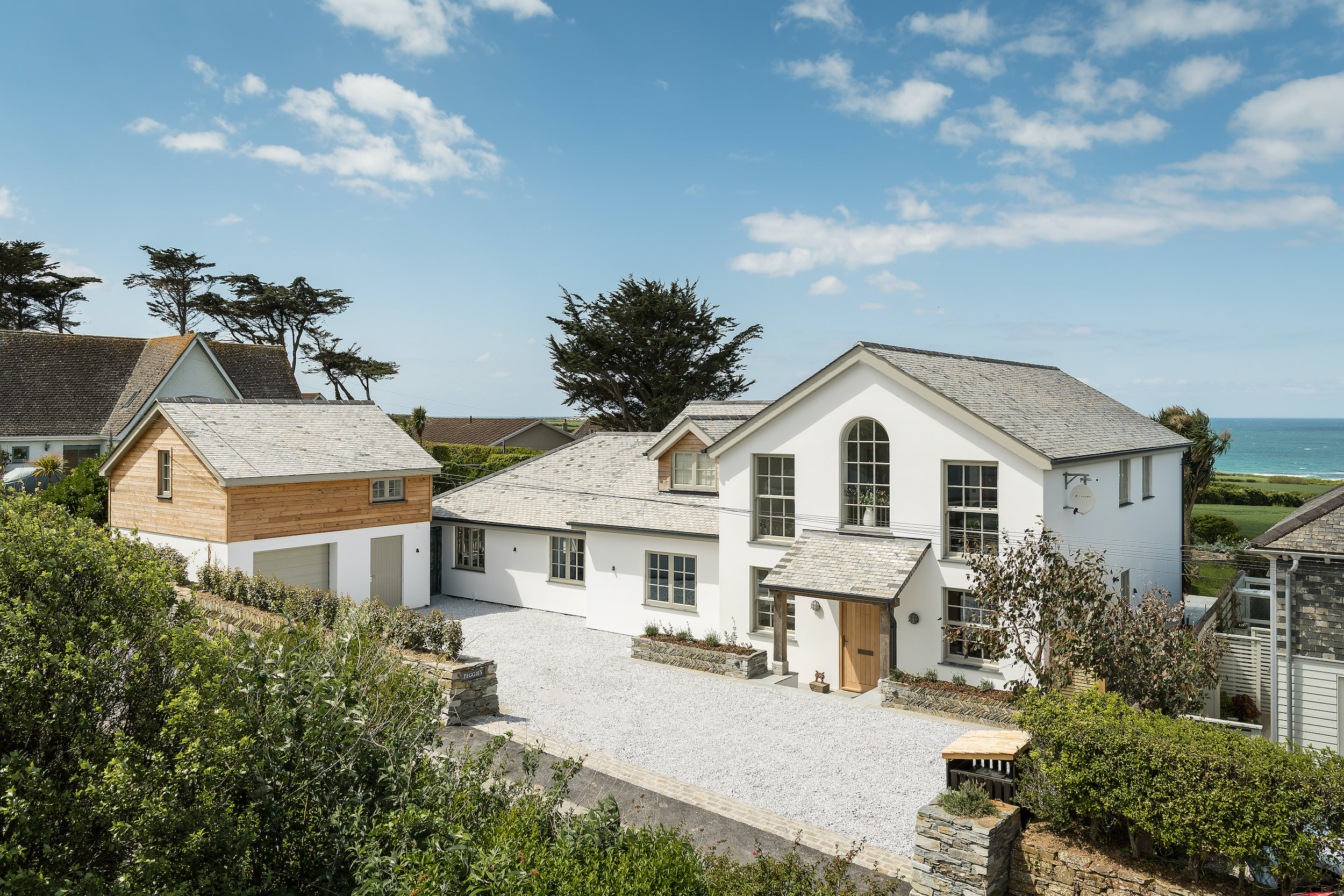
- Victorian: ‘Two over two’ reigned supreme in Victorian times, but many other configurations can be also found through the whole period. This included sash windows with just a single light, as well as the inclusion of sidelights
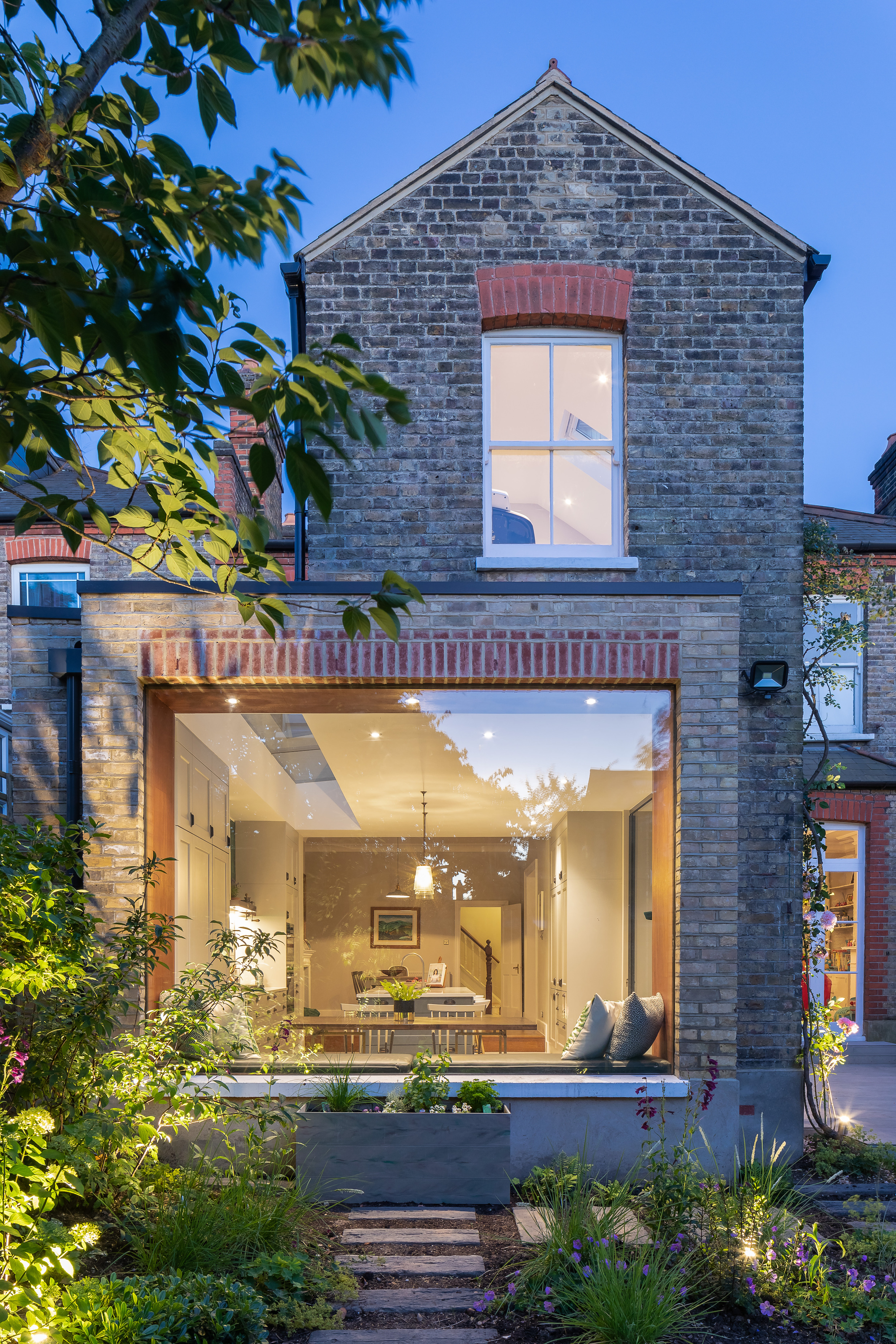
- Edwardian: Typically ‘six over two’ panes was most common, but, as with the Victorian era, the Edwardians saw variations in style
Other variations in sash style include:
- Venetian windows which consist of a central sliding sash between two fixed panes either side
- The Queen Anne Revival styles incorporates several panes in the upper sash but just one or two in the lower
- Sashes were often arched instead of rectangular in Regency or Gothic revival periods, and in some regions it is popular to have horizontally-sliding sashes
Are sash windows high maintenance?
All timber windows need regular maintenance to hold on to their good looks and to work well over the years and timber sash windows are no exception. That said, modern stains and other protection products can help reduce the frequency of maintenance jobs.
More complex maintenance jobs, such as cord replacement, will benefit from the services of a professional, but there are some jobs that can be carried out on a DIY basis.
Minor cracking or flaking in paintwork is a common issue which should be looked at every five or so years for external paintwork. As the paint protects the timber beneath, keeping a firm eye on any deterioration will ensure the frames won’t rot or swell.
Can sash windows be double glazed?
While homeowners are often allowed to fit new single glazed units within window restoration projects, modern building regulations make it near impossible to install single glazed windows on a new house. Thankfully, there are now many new beautiful and authentic-looking timber sash windows products with double glazing.
Owners of period properties are also often very keen to look at ways of draught proofing windows and growing concerns about the energy efficiency of older houses might steer you in the direction of replacing single panes with double when renovating. While it is possible, it needs close attention to be sure the delicate look of a sash window is not lost in modernisation.
Dividing up small units of double glazing with thick glazing bars tends to look clumsy, but there are methods of effectively recreating fine glazing bars. The best way is to bond mock bars onto either side of a single double glazed unit. You could also incorporate spacer bars between the glass sheets, at a higher cost, to add to the effect.
Triple glazed window options are also available in these traditional styles, but as with all triple glazed windows, it might come at a premium. However, modern triple glazing could be seen as no longer carrying the cost stigma that was attached for the last couple of decades. This is in the majority due to triple glazed windows being manufactured in mainland Europe where it is much more mainstream.
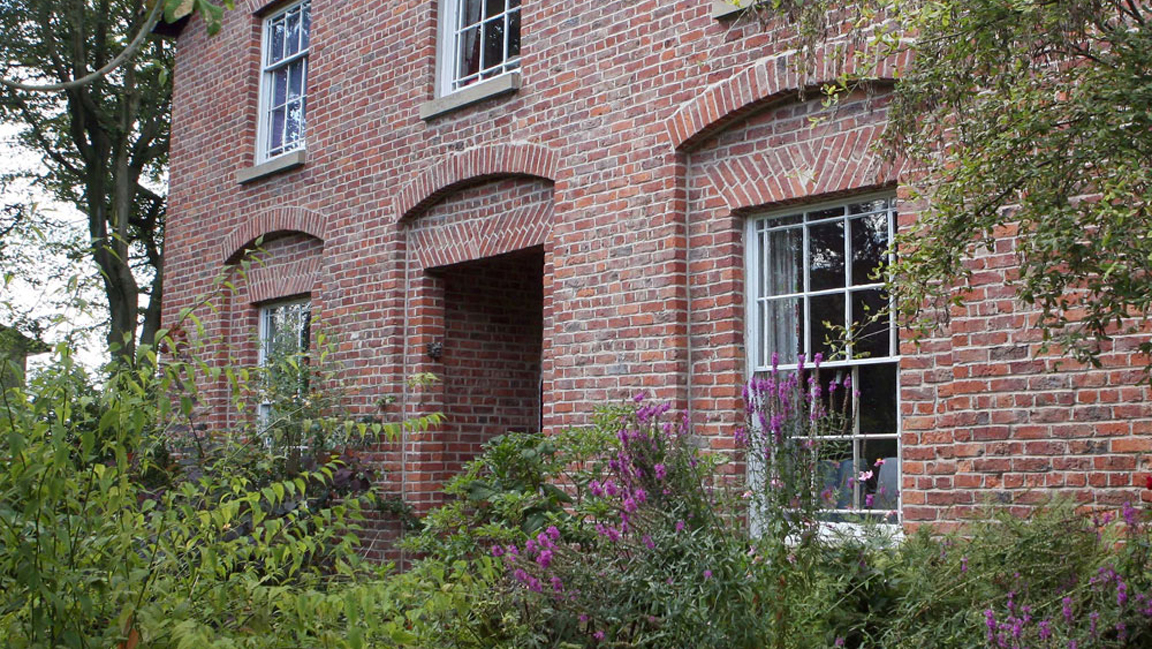
Should sash windows be restored or replaced?
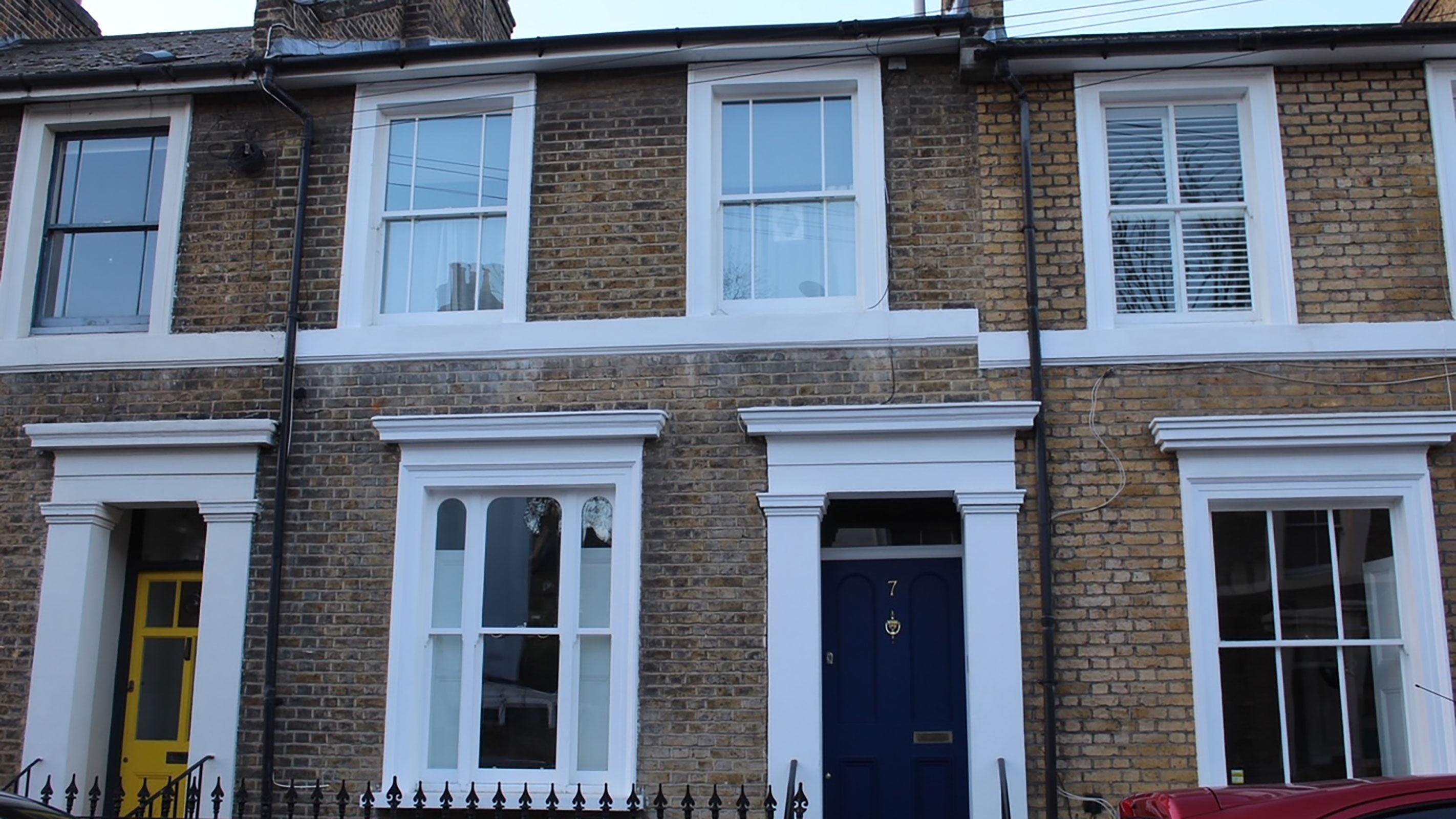
While sash windows can be replaced, whether you’re updating your existing home or taking on a period renovation project, be careful not to make the mistake of removing period timber sashes that could actually be saved.
Where they can be restored, re-conditioned and waterproofed, it is always worth holding onto the original windows or box sash, as new window sashes can be made to fit the existing frame, lowering the price of the replacement.
However, if the windows are beyond repair or if there aren’t any left in place, many companies manufacture authentic replacements.
Most issues with timber windows can be fixed, including foggy windows, rotten frames and sticking sashes and a professional will be able to assist in making the decision in whether to salvage or replace but ultimately, the decision to keep original sash windows is down to customer preference and budget.
The benefits of repairing sash windows include:
- House retains original charm and character
- Homeowners benefit from improved thermal performance with double glazing and draught proofing if the box frame is retained and glazing is replaced
- Original timber is generally of better quality than the products we can purchase today
- Properly repaired timber windows can last another 100 years with a bit of care and attention
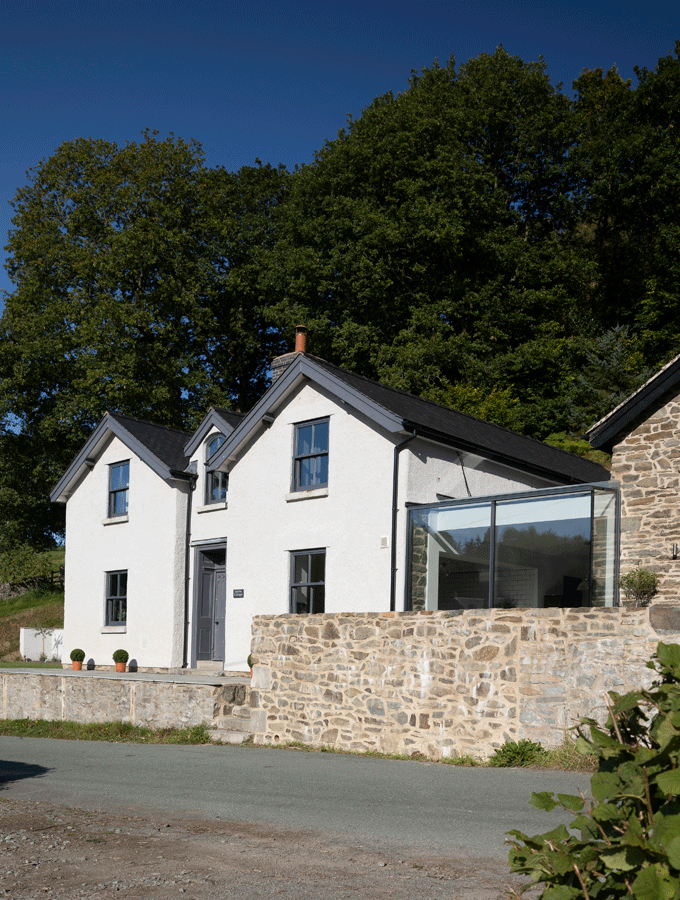
What material is best for replacement sash windows?
For traditionalists or for those living in a Conservation Area or listed building, genuine timber sash windows are likely to be the first (and only allowable) choice. Sadly, plastic cannot replicate the same tactile effect and it can be hard to achieve the finer, more delicate details, although technology has seen advancements in this field.
As a material for sash windows, timber is durable, an excellent insulator, long lasting (if properly maintained) and available in most paint colours and stains. Modern developments also mean that timber windows are no longer the very high maintenance option they once were.
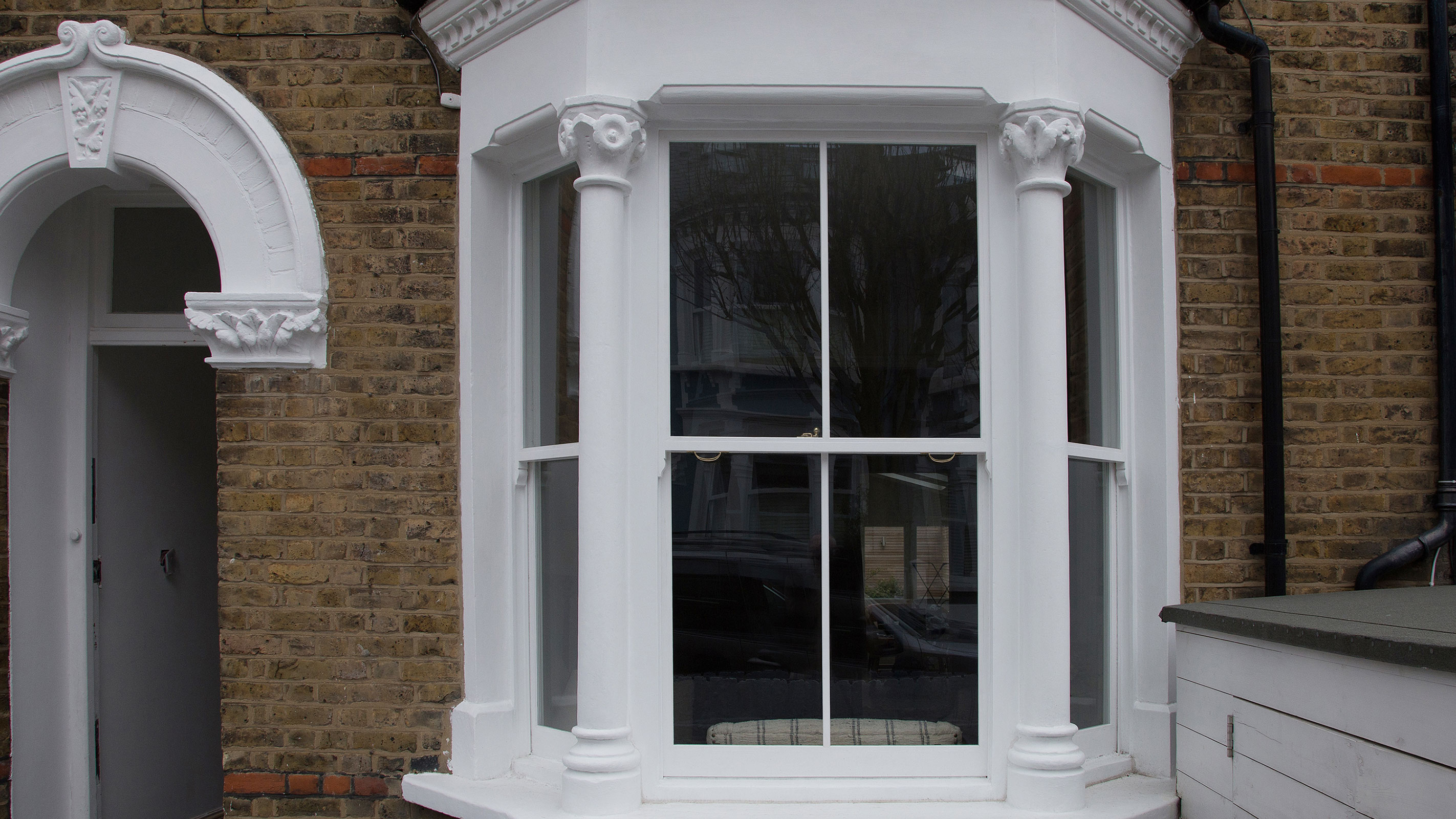
Should I consider uPVC sash windows?
Those wary of new window costs often consider uPVC windows as an alternative to timber.
uPVC is often used as a substitute for painted wood. Though most commonly seen in white, it comes in a wide range of colours and finishes, including a photo-effect wood finish. However, if you live in a Conservation Area or in a listed building, changing to plastic sash windows will most likely be frowned upon.
The benefits of uPVC include its low maintenance requirements, its energy efficiency, price and durability. On the downside, uPVC sash windows struggle to look authentic, cannot be recycled and are harder to repair.
What are composite sash windows?
It is becoming popular for sash windows to be composite in their construction, with a timber interior and aluminium cladding on the exterior.
They are popular with those keen to retain the classic look of wood on the inside and are also highly durable and low-maintenance.
That said, they are also expensive and will not always be acceptable in designated areas.
How much do replacement sash windows cost?
Installing new sash windows into an existing house or in a traditional-style self build will generally be a more expensive job that than having casements fitted, but the extra cost for added character or a realistic recreation is usually worth it.
As with most windows, uPVC sash windows are cheapest, but lack the finish of traditional timber.
"The cost of sash windows can vary greatly depending on several factors such as the size of the windows and the style," explains Sam Churchill of timber window and door renovation specialists Ventrolla.
To give you a rough idea, uPVC replacement sash windows start from around £950 for a larger sash window. while timber and composite replacement sash windows start from approx. £1,300.
How much does sash window repair cost?
Sash windows can require all kinds of repair jobs, such as new panes, cill replacement and draught proofing — also new sashes can be fitted into existing frames.
Full sash window restoration can be expected to start from around £950-£1,000, rising to well over £2,000 depending on specification and the condition of the window. A sash sill splice repair usually costs somewhere in the region of £120 to £240.
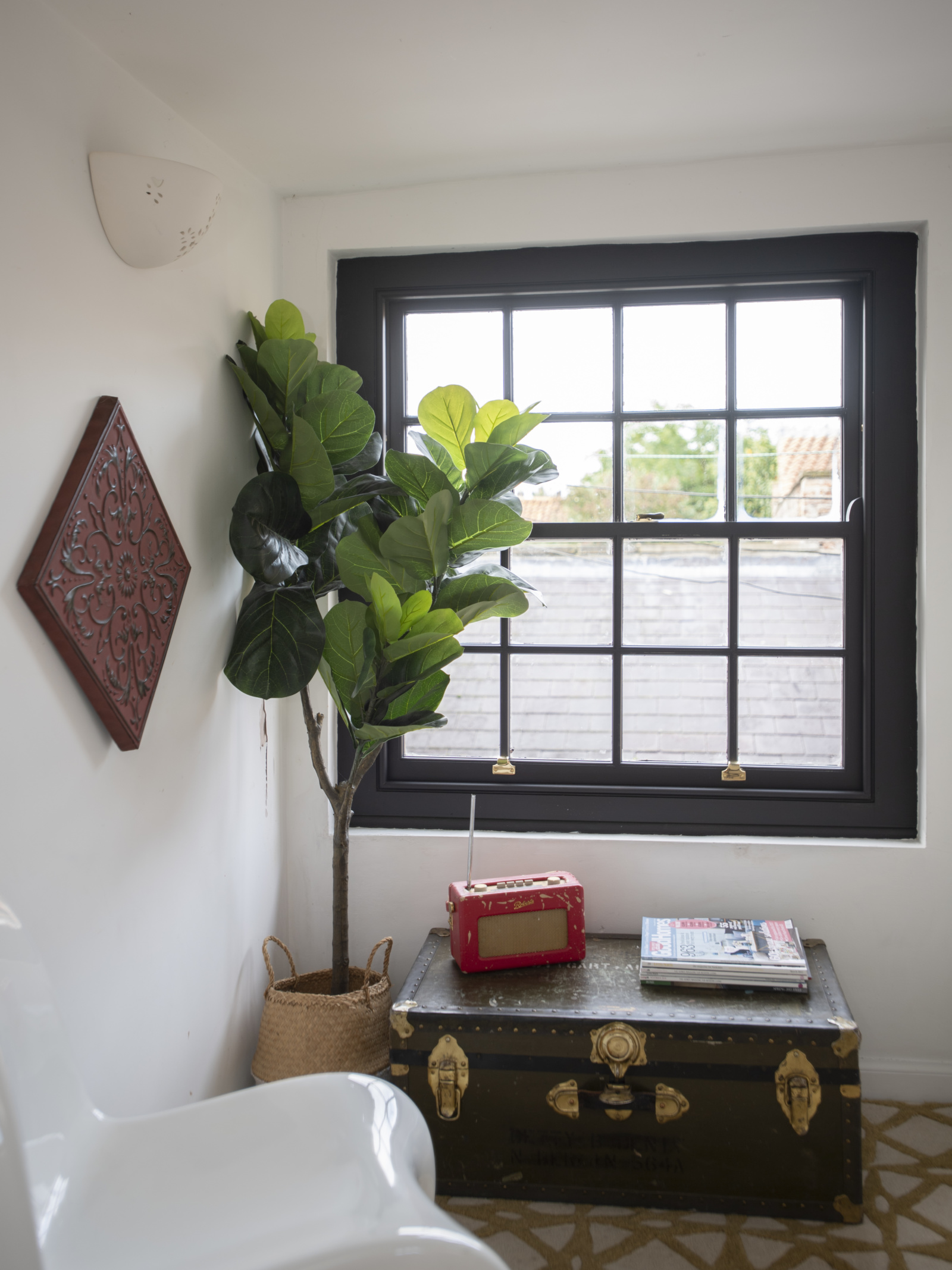
Get the Homebuilding & Renovating Newsletter
Bring your dream home to life with expert advice, how to guides and design inspiration. Sign up for our newsletter and get two free tickets to a Homebuilding & Renovating Show near you.
Melanie is an experienced homes journalist and editor of Period Living, Britain's best-selling period homes magazine. She has worked for Homes & Gardens and Real Homes, and is a former Deputy Editor of Homebuilding & Renovating, writing about modern design and architecture, and interviewing countless self builders and renovators about their experiences. In addition to undertaking her renovation projects, her other great passion is gardening.
